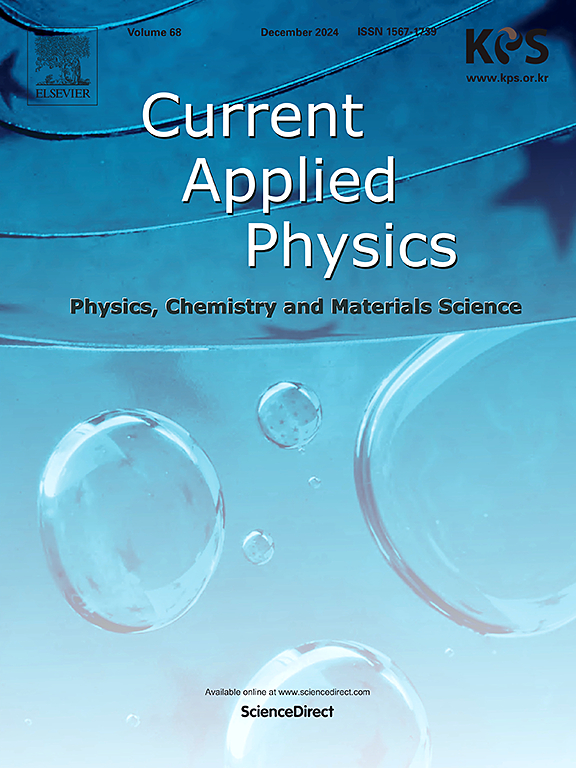Synthesis and characterization of PVA/KC/NaYF4:Eu3+ composite fluorescent films
IF 3.1
4区 物理与天体物理
Q3 MATERIALS SCIENCE, MULTIDISCIPLINARY
引用次数: 0
Abstract
Fluorescent composite films were prepared using polyvinyl alcohol (PVA) as the substrate and NaYF4:Eu3+ phosphors and κ-carrageenan powder (KC) as the fillers by the casting method. The impact of incorporating NaYF4:Eu3+ on the structural, morphological, mechanical property, thermal stability, and optical characteristics of PVA/KC films was examined. The incorporation of KC promoted the formation of hydrogen bonds between KC and PVA. Consequently, the water contact angle of the films increased by approximately 10°, indicating improved water resistance. Meanwhile, the incorporation of NaYF4:Eu3+ increased the thermal stability of the films, with the temperature at 5 % mass loss rising by approximately 13 °C. Additionally, the mass retention at 600 °C improved by 3.47 %. Notably, the addition of NaYF4:Eu3+ had a negligible effect on the transparency of the films while imparting fluorescent properties. Under UV excitation at 395 nm, the films exhibited maximum fluorescence intensity at 616 nm, indicating a significant fluorescence effect.

PVA/KC/NaYF4:Eu3+复合荧光膜的合成与表征
以聚乙烯醇(PVA)为底物,以NaYF4:Eu3+荧光粉和κ-卡拉胶粉(KC)为填料,采用浇铸法制备了荧光复合薄膜。研究了掺入NaYF4:Eu3+对PVA/KC薄膜结构、形貌、力学性能、热稳定性和光学特性的影响。KC的加入促进了KC与PVA之间氢键的形成。因此,膜的水接触角增加了约10°,表明水阻力提高。同时,NaYF4:Eu3+的加入提高了膜的热稳定性,在5%质量损失时,膜的温度提高了约13℃。此外,在600°C时,质量保持率提高了3.47%。值得注意的是,加入NaYF4:Eu3+对膜的透明度的影响可以忽略不计,但却赋予了荧光特性。在395 nm紫外光激发下,薄膜在616 nm处荧光强度最大,荧光效应显著。
本文章由计算机程序翻译,如有差异,请以英文原文为准。
求助全文
约1分钟内获得全文
求助全文
来源期刊

Current Applied Physics
物理-材料科学:综合
CiteScore
4.80
自引率
0.00%
发文量
213
审稿时长
33 days
期刊介绍:
Current Applied Physics (Curr. Appl. Phys.) is a monthly published international journal covering all the fields of applied science investigating the physics of the advanced materials for future applications.
Other areas covered: Experimental and theoretical aspects of advanced materials and devices dealing with synthesis or structural chemistry, physical and electronic properties, photonics, engineering applications, and uniquely pertinent measurement or analytical techniques.
Current Applied Physics, published since 2001, covers physics, chemistry and materials science, including bio-materials, with their engineering aspects. It is a truly interdisciplinary journal opening a forum for scientists of all related fields, a unique point of the journal discriminating it from other worldwide and/or Pacific Rim applied physics journals.
Regular research papers, letters and review articles with contents meeting the scope of the journal will be considered for publication after peer review.
The Journal is owned by the Korean Physical Society.
 求助内容:
求助内容: 应助结果提醒方式:
应助结果提醒方式:


